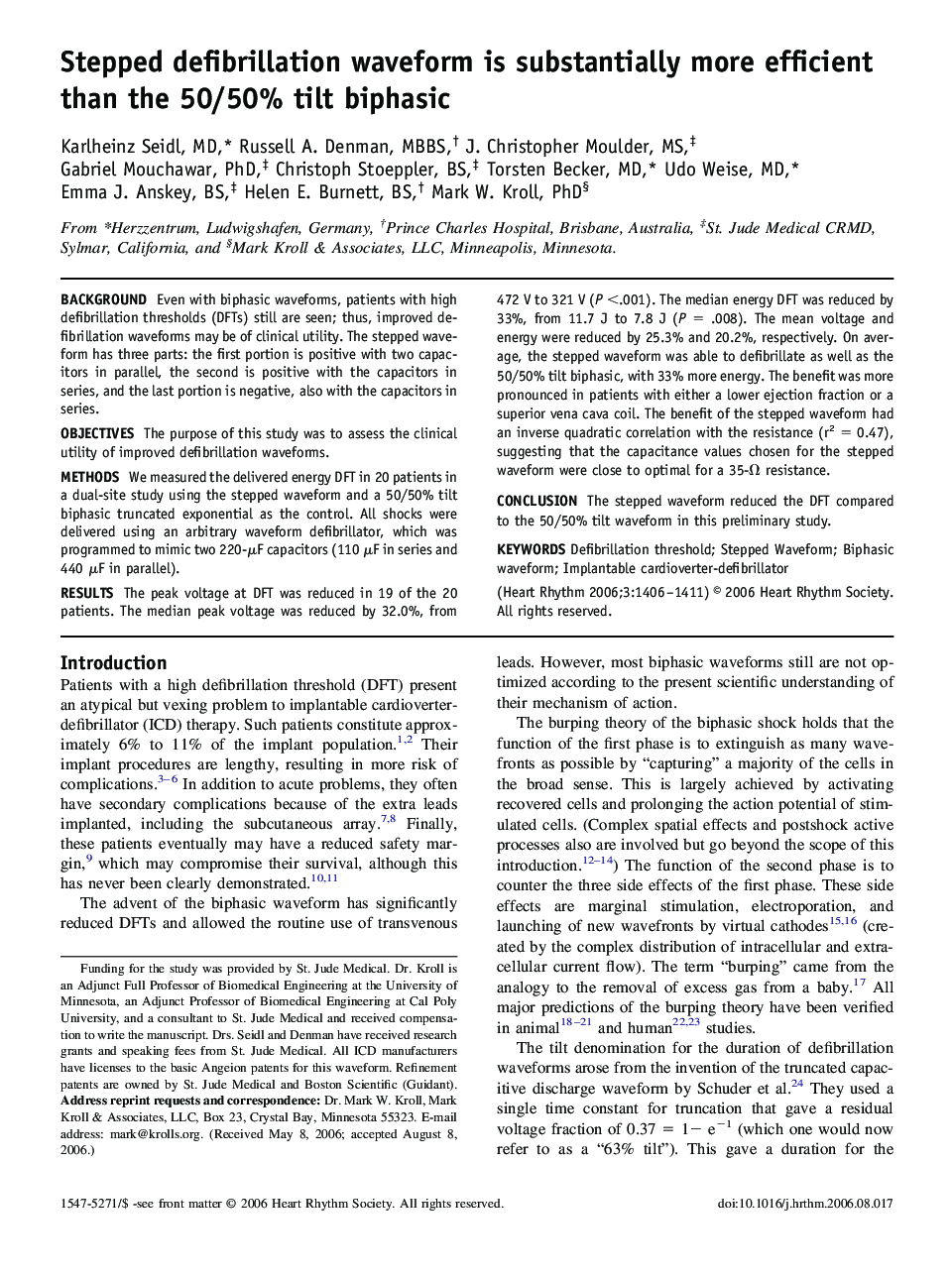| Article ID | Journal | Published Year | Pages | File Type |
|---|---|---|---|---|
| 2925232 | Heart Rhythm | 2006 | 6 Pages |
BackgroundEven with biphasic waveforms, patients with high defibrillation thresholds (DFTs) still are seen; thus, improved defibrillation waveforms may be of clinical utility. The stepped waveform has three parts: the first portion is positive with two capacitors in parallel, the second is positive with the capacitors in series, and the last portion is negative, also with the capacitors in series.ObjectivesThe purpose of this study was to assess the clinical utility of improved defibrillation waveforms.MethodsWe measured the delivered energy DFT in 20 patients in a dual-site study using the stepped waveform and a 50/50% tilt biphasic truncated exponential as the control. All shocks were delivered using an arbitrary waveform defibrillator, which was programmed to mimic two 220-μF capacitors (110 μF in series and 440 μF in parallel).ResultsThe peak voltage at DFT was reduced in 19 of the 20 patients. The median peak voltage was reduced by 32.0%, from 472 V to 321 V (P <.001). The median energy DFT was reduced by 33%, from 11.7 J to 7.8 J (P = .008). The mean voltage and energy were reduced by 25.3% and 20.2%, respectively. On average, the stepped waveform was able to defibrillate as well as the 50/50% tilt biphasic, with 33% more energy. The benefit was more pronounced in patients with either a lower ejection fraction or a superior vena cava coil. The benefit of the stepped waveform had an inverse quadratic correlation with the resistance (r2 = 0.47), suggesting that the capacitance values chosen for the stepped waveform were close to optimal for a 35-Ω resistance.ConclusionThe stepped waveform reduced the DFT compared to the 50/50% tilt waveform in this preliminary study.
